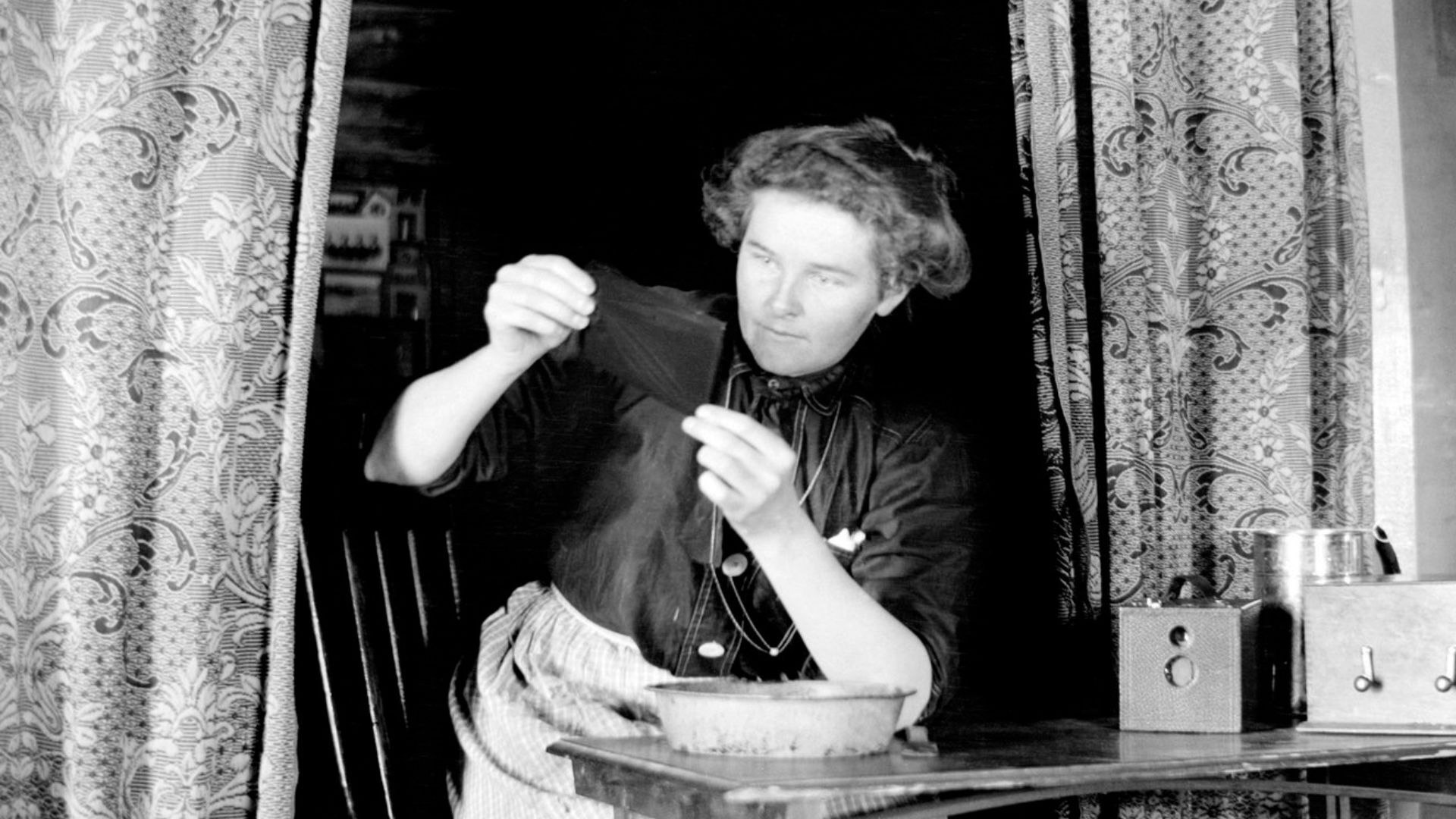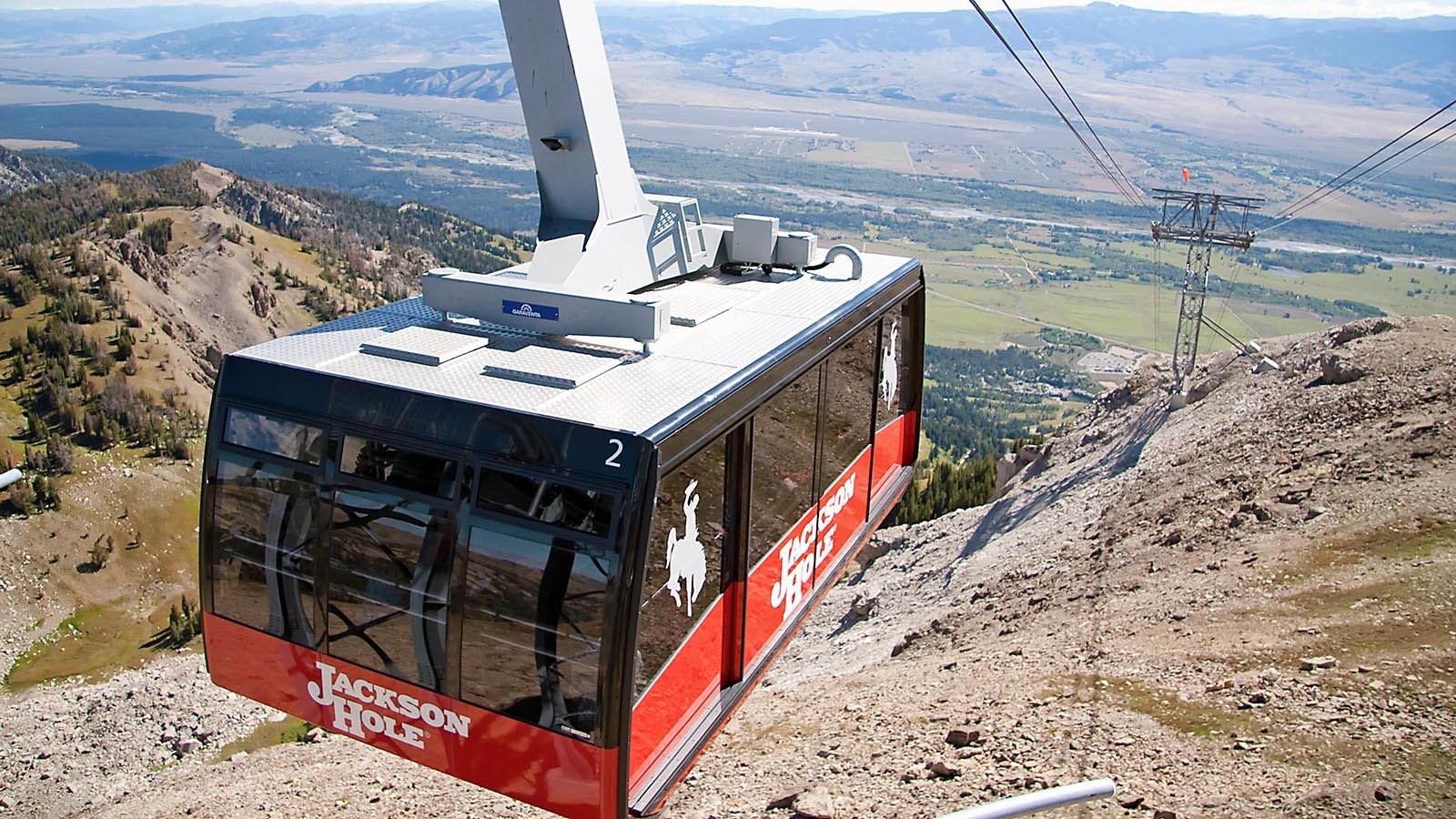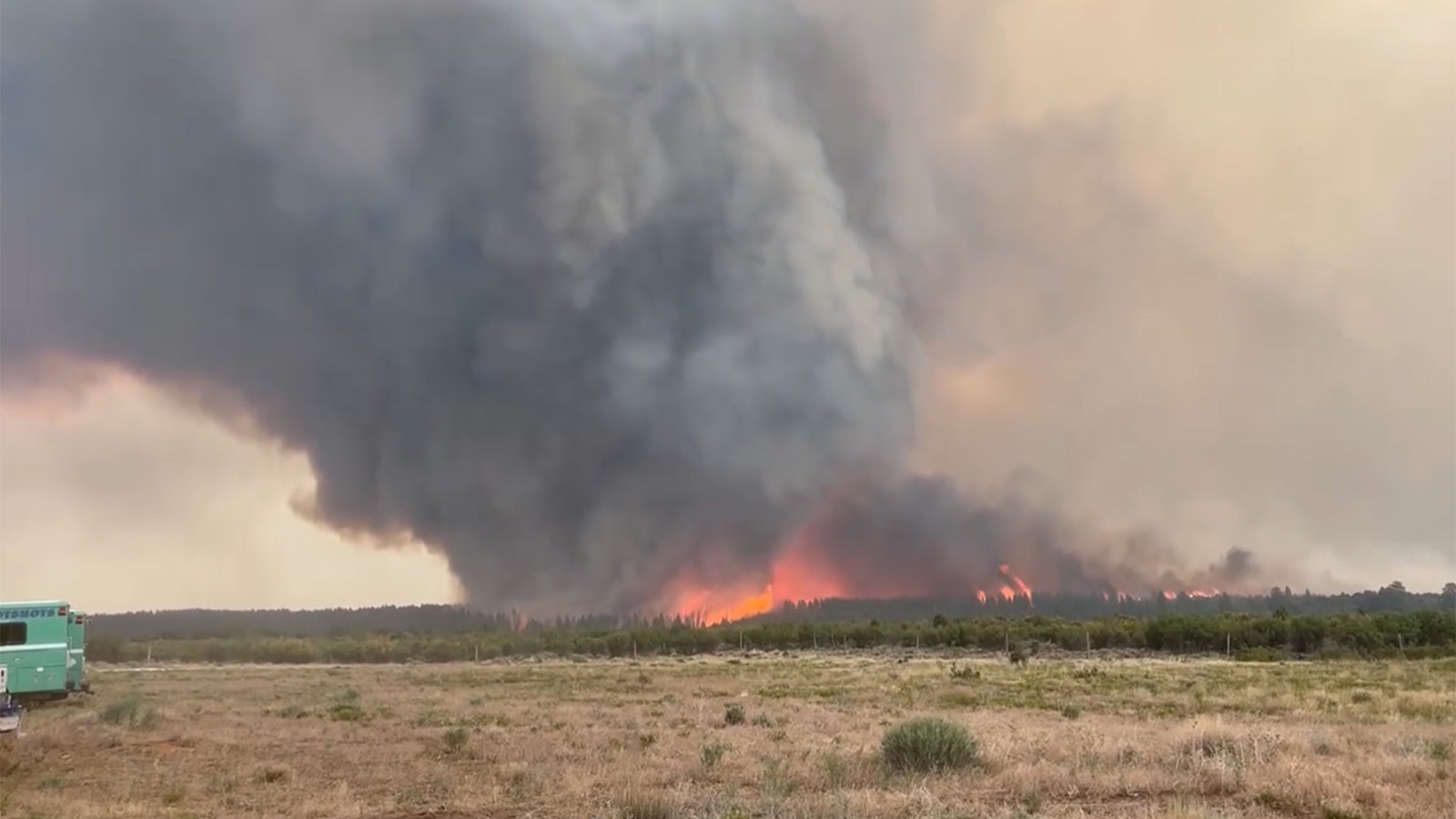The images are crystal clear.
A young boy balancing a cat on his head. An emaciated man recovering from the Spanish flu epidemic. A woman brushing her ankle-length hair. Sisters peering over a wooden fence.
These photographs are just a fragment of the life’s work of Lora Webb Nichols, an Encampment rancher and businesswoman whose passion for photography is encapsulated in a collection of more than 24,000 images spanning well over 60 years. They’re now safely preserved at the University of Wyoming’s American Heritage Center.
The collection is a rare look at daily life in a Wyoming mining town in the early 20th century.

An Important Effort
Nancy Anderson, one of the foremost authorities on Lora Webb Nichols, has made preserving Nichols’ legacy her own life’s work.
“She was a very good friend of my parents,” said Anderson, who turned 86 on Friday. “She became just like a member of the family.”
Anderson, who helped to take care of Nichols in the months before her death in 1962, lives in the house Nichols bought in 1935. She has read and re-read Nichols’ diaries and has played a large part in archiving the 24,000 or so photos that Nichols took over her lifetime.
Anderson has written her own book about Lora Webb Nichols (“Homesteader’s Daughter, Miner’s Bride”) and has worked with authors, documentarians, art galleries and others who seek to bring Nichols’ work to the world.
“She’s now being recognized for the genius and the artist that she was,” said Anderson.
‘Who Knows When You Might See An Elephant?’
Born in 1883 in Boulder, Colorado, Nichols (whose family moved to the Encampment area to homestead in 1886) began keeping a diary at age 13 and started taking photographs three years later.
“She was always accompanied by somebody carrying her cameras,” said Anderson. “It was just habitual. She said, ‘Who knows when you might see an elephant?’”




Marriages
Many of Nichols’ photographs captured the lives of those around her, including her six children by her two husbands, Bert Oldman Sr. and Guy Nichols.
“She married Bert Oldman just a few weeks shy of her 17th birthday,” said Anderson. “We had that copper boom, and he was a prospector who came and kind of swept her off her feet, and they had two children.”
As a testament to the independent woman she was, she divorced Oldman a few short years after the birth of their second child.
“He would often go off into the hills with his mining interests and leave her to manage with the children,” said Anderson. “And he would come to town, just walk through the house practically, and go down and meet his cronies at the lodge or in the saloon.”
At age 27, she divorced Oldman, remaining a single mother until she remarried in 1914, this time to her first cousin, Guy Nichols. They would go on to have four boys, but Lora once again found herself raising the children alone.
“In 1919, when the Spanish flu epidemic comes, Guy, her husband at that time, almost died,” said Anderson. “It’s just nip and tuck whether he will live, and he does, but I think he was forever marred by his experience with the flu.”

Entrepreneur
By 1921, Nichols had six children and a husband whose bout with the Spanish flu had left him severely disabled. But rather than fall under the burden, Nichols took charge of her family.
“This is when she tried to make a living with her photography,” said Anderson. “Then in the late ’20s, she takes over the newspaper.”
In addition to the Encampment Echo, Nichols owned the town soda shop and opened her own photography and photo finishing business, Rocky Mountain Studios.
“She was basically self taught,” said Anderson. “She literally had to do every step of the process – she got a camera, and then she got the material to create a darkroom in the longhouse where they lived, which was not large, it was very small.
“So, her first photographs were just developed practically at the kitchen table.”
Although Nichols only had four years of formal schooling, Anderson said she was a voracious reader and writer.
“She was a self-taught genius, not only in photography, but I would say in human relations,” said Anderson. “A natural.”
The Collection
Not all of the photographs in the massive collection were Lora’s originals, however. Anderson said that during her years at the Rocky Mountain Studio, Nichols collected images from other people whose photos she would develop.
“If there was something that she really liked, it became part of her collection,” said Anderson.
Because Nichols was living in the early era of dude ranches, her photography documented a significant point in America’s history.
“The West as a myth was forming,” said Anderson. “And then the Civilian Conservation Corps came. And she had the local soda shop called The Sugar Bowl during the CCC period, and some of her portraits at the bar of the soda shop are among her very best pictures.”

Escape to California
In 1935, after years of motherhood and ranching and entrepreneurship, Nichols made what was considered an uncharacteristic move – she left Wyoming, her children and her life, and moved to California.
“Frankly, she just escaped to California, leaving Guy and the boys,” said Anderson. “I think the eldest was already out of the home. And that was the year her mother died.”
Nichols worked as a housekeeper, and later a kitchen helper in a children’s home in Stockton, which she went on to become director of.
“And she was lauded statewide as a social worker,” said Anderson. “This is the time of the Second World War, and she formulated very modern practices dealing with children.”
Back To Wyoming
Nichols returned to Encampment in 1957, living out the rest of her days in the home that Anderson bought a few years later.
“It took me a very long time to realize what an amazing person she was,” said Anderson. “And then gradually, through the years, we became involved, my husband and I, in scanning the negatives, and I have read her entire diary several times.
“So, she’s kind of become my life’s work, preserving her legacy.”
Continuing Interest
Anderson said although she’s been through Nichols’ collection numerous times, she is still taken aback by some of the images she finds.
“I come across an image and I think, ‘What a genius we had here, what an outstanding woman,’” said Anderson.
Interest in Nichols’ collection has grown in recent years, and not just in Wyoming. Two European filmmakers have recently visited Encampment with the intent of doing a documentary on Nichols’ work.
“All of the interest has just been amazing,” said Anderson.
‘People Being People’
Nora Plant, archivist at the American Heritage Center, said that not only is the size of the collection unusual, but so is the fact that the photographs were all taken by a woman in the early 20th century.
“One of the most unique aspects about this collection is that it shows what daily life was like back in that time,” Plant told Cowboy State Daily. “Whereas a lot of photos from this time were set up, and you can’t really learn that much from a photo like that.”
She pointed out that the candid nature of many of the photographs is something not often found in photos from that time.
“It has just people being people, how Wyoming life was like,” Plant said.





